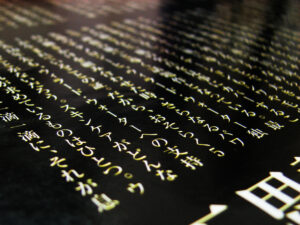Japan is a land steeped in rich folklore, where ancient tales intertwine with the natural beauty of the landscape. One such tale that captivates the imagination is the Legend of Tatsuko, a poignant story from the Tohoku region that has transcended time. This legend, rooted in themes of love, loss, and transformation, offers a glimpse into the human condition and the interplay between nature and myth. As we unravel the enigmatic tale of Tatsuko, we explore its origins, themes, cultural significance, and enduring legacy in modern society.
1. Introduction to the Enigmatic Tale of Tatsuko
The Legend of Tatsuko is primarily centered around a beautiful woman named Tatsuko, who is said to have lived by the shores of Lake Tazawa, Japan’s deepest lake. This story, like many in Japanese folklore, is steeped in emotion and moral lessons. Tatsuko’s narrative is not merely a tale of personal tragedy; it serves as a reflection of the universal themes of desire, sacrifice, and the passage of time. Visitors and locals alike are drawn to her story, which echoes through the serene beauty of Lake Tazawa and the surrounding landscapes.
What makes the Legend of Tatsuko particularly compelling is its duality: while it is a love story, it also speaks to the inevitable loss that accompanies human experience. As we delve deeper into the tale, we uncover layers of meaning that resonate with individuals from various walks of life. Understanding this story requires both an appreciation for its cultural context and an acknowledgment of its emotional depth.
Furthermore, the tale of Tatsuko has not only survived the test of time but has also evolved, inspiring countless interpretations across multiple mediums. From literature to visual arts, Tatsuko’s narrative continues to inspire creativity, making her a significant figure in both historical and contemporary Japanese culture.
As we move through the various aspects of the Legend of Tatsuko, we will explore its historical roots, the themes that permeate the narrative, the picturesque setting of Lake Tazawa, and the influence it has had on tourism and local culture. Each section will reveal how this legend, though steeped in the past, remains relevant and impactful in today’s society.
2. Historical Background: The Origins of the Legend
The origins of the Legend of Tatsuko can be traced back to ancient times, with its roots firmly planted in the rich soil of Japanese folklore. While the exact date of its inception is unclear, references to Tatsuko and Lake Tazawa have appeared in various texts and oral traditions throughout Japanese history. Folklorists believe that such legends were crafted as cautionary tales, meant to impart moral lessons about love, devotion, and the consequences of one’s desires.
Mythological figures like Tatsuko often arise from the intersection of natural landscapes and human experience. In the case of Tatsuko, her connection to Lake Tazawa serves as a powerful symbol of her longing and ultimate fate. The lake’s breathtaking beauty and depth reflect the complexity of her character and the emotional weight of her story. As such, the legend has become intertwined with the identity of the region, capturing the hearts of residents and visitors alike.
Moreover, historical accounts suggest that the tale of Tatsuko may have been influenced by the socioeconomic conditions of the time. Issues such as class disparity and gender roles are subtly woven into the narrative, making it not just a love story but a commentary on societal norms. The historical context surrounding the tale adds an additional layer of richness, allowing modern audiences to appreciate the depth of its message.
As we analyze the legend’s historical background, it is essential to acknowledge how oral traditions have preserved Tatsuko’s story across generations. The passage of time has shaped the narrative, allowing for variations and adaptations that reflect the evolving values and beliefs of Japanese society. This oral history serves as a testament to the enduring nature of Tatsuko’s character and her emotional resonance with people across time.
In summation, the historical background of the Legend of Tatsuko provides a foundation for understanding both the character’s significance and the broader cultural implications of her story. By examining its origins, we can better appreciate the ways in which this tale has evolved while remaining firmly anchored in the landscape of Japanese folklore.
3. The Myth of Tatsuko: A Brief Overview
At the heart of the Legend of Tatsuko is a compelling narrative that captures the essence of love and loss. Tatsuko, a beautiful maiden, yearns for eternal beauty and wishes to remain young forever. In her quest, she seeks the help of a deity, who grants her wish but with a grave consequence. Transforming into a dragon, Tatsuko discovers that her desire for immortality comes at the cost of her humanity—she is forever separated from the world she once knew and loved.
The primary setting of this myth is Lake Tazawa, where Tatsuko is said to have lived. The tale unfolds with her love for a young man, whom she is deeply devoted to. However, as her desire for eternal beauty grows, she becomes increasingly isolated from him, reflecting the struggle between human longing and the harsh realities of existence. The narrative takes a tragic turn as Tatsuko ultimately sacrifices her humanity for her dream, highlighting the consequences of unchecked desires.
The story’s structure follows a classic arc of rising action, climax, and resolution, with Tatsuko’s emotional journey at its center. The myth serves as an allegory for the dangers of selfish desires and the inevitable passage of time, emphasizing that true beauty lies not in physical appearance but in the connections we forge with others. This poignant lesson resonates with audiences, making the tale timeless and universally relatable.
In addition to its narrative depth, the myth of Tatsuko intricately weaves elements of nature into its fabric. The transformation of Tatsuko into a dragon symbolizes her connection to the natural world, while Lake Tazawa serves as a reminder of the duality of beauty and tragedy. These elements elevate the story, creating a rich tapestry of emotions and moral reflections.
The Legend of Tatsuko is not only a story of individual loss; it also embodies broader themes prevalent in Japanese mythology, such as the relationship between humans and the divine. Tatsuko’s desire for immortality leads her to invoke the powers beyond her understanding, resulting in a transformation that ultimately isolates her from the very things she wished to protect. This intricate relationship between desire, sacrifice, and consequence forms the backbone of the tale, allowing it to endure through generations.
4. Key Themes: Love, Loss, and Transformation
At the core of the Legend of Tatsuko lies the profound exploration of love. Tatsuko’s love for her young man is palpable, driving her initial desires and decisions. Yet, this love is not simply romantic; it underscores a longing for connection, acceptance, and belonging. As Tatsuko pursues eternal beauty, her love becomes tainted by selfishness, leading to a tragic rift between her and the world. This theme invites readers to reflect on the nature of love and the sacrifices one might make in its name.
Loss is another significant theme that permeates the narrative. Tatsuko’s transformation into a dragon symbolizes a profound sense of loss—not just of her humanity but also of her relationships and dreams. This aspect of the tale resonates deeply with audiences, as it speaks to the inevitability of losing what is cherished in the relentless march of time. The emotional weight of loss is encapsulated in the tragic irony of Tatsuko’s desires, prompting contemplation on the costs associated with our aspirations.
Transformation is a crucial theme that ties the story together, illustrating the fluidity of identity and the malleability of human desires. Tatsuko’s journey reflects a metamorphosis from a mortal woman to a mythical dragon, demonstrating that transformation can come at a steep price. This theme serves as a reminder that change is an intrinsic part of life; however, the nature of that change—whether positive or negative—ultimately depends on the choices we make.
Moreover, the interplay of these themes forms a rich narrative that transcends the individual experience. The story of Tatsuko can be viewed as a microcosm of the human condition, illustrating the universal struggles of love, loss, and the desire for transformation. This relatability is a key reason why the tale has captured the hearts of so many, allowing it to remain relevant through the ages.
The Legend of Tatsuko also invites exploration of societal values and expectations, particularly regarding beauty and worth. Tatsuko’s longing for eternal beauty can be interpreted as a commentary on societal pressures and the lengths to which individuals may go to conform to idealized standards. This connection to contemporary issues adds depth to the narrative, highlighting how the themes of the legend resonate not only in historical contexts but also in modern discussions surrounding self-worth and identity.
In essence, the key themes of love, loss, and transformation encapsulate the essence of the Legend of Tatsuko. They serve as both a reflection of the human experience and a timeless reminder of the complexities woven into the fabric of our desires.
5. The Setting: Lake Tazawa and Its Mystical Aura
Lake Tazawa, located in Akita Prefecture, is not just the backdrop of the Legend of Tatsuko; it is a character in its own right. Known for being Japan’s deepest lake, its azure waters and tranquil surroundings create an atmosphere steeped in mystique. The lake has long been admired for its natural beauty, making it a fitting setting for a tale that intertwines love, longing, and transformation.
The lake’s depth and clarity evoke a sense of wonder, mirroring the complexities of Tatsuko’s character and her emotional journey. As the story unfolds, the lake becomes a metaphor for the depths of human desire and the consequences of pursuing unattainable ideals. The serene yet haunting presence of Lake Tazawa adds layers of meaning to the narrative, enhancing the emotional weight of Tatsuko’s choices.
Moreover, the natural environment surrounding Lake Tazawa contributes to the story’s enchanting quality. The lush greenery, mountains, and seasonal changes provide a vivid backdrop that complements the themes of the legend. In spring, cherry blossoms bloom, symbolizing beauty and transience, while the winter snows mirror the stark reality of Tatsuko’s fate. This ever-changing landscape serves as a reminder of the cycles of life, emphasizing the impermanence that underpins the legend.
The lake itself has become a site of cultural significance, attracting visitors who seek to connect with the story of Tatsuko and experience the beauty of the landscape. The interplay between the natural world and human emotion creates a profound sense of place, inviting contemplation and reflection on the themes of the legend.
Additionally, Lake Tazawa’s status as a natural wonder has inspired local customs and traditions that celebrate the tale of Tatsuko. Festivals and events centered around the lake allow the community to honor the legend while also promoting tourism. This connection between the setting and the myth reinforces the idea that nature and culture are inextricably linked, enriching the narrative and the overall experience for visitors.
Ultimately, the setting of Lake Tazawa plays a vital role in shaping the Legend of Tatsuko. Its beauty, depth, and mystical qualities contribute to the emotional resonance of the tale, making it a timeless symbol of love, loss, and transformation.
6. Tatsuko’s Journey: From Mortal to Mythical Figure
Tatsuko’s journey from mortal woman to mythical figure encapsulates the core of her narrative. Initially portrayed as a beautiful maiden with desires similar to many, her longing for eternal beauty sets the stage for her transformation. This transition reflects not only her personal aspirations but also the broader human experience of grappling with mortality, identity, and the consequences of one’s choices.
As Tatsuko’s story unfolds, we witness her struggle against the constraints of her humanity. Her pursuit of immortality is driven by a deep-seated fear of loss, a sentiment that resonates with many. The moment she makes her fateful choice to seek the help of a deity, Tatsuko embarks on a path that will redefine her existence. This pivotal decision marks the beginning of her transformation, illustrating the theme of desire leading to unforeseen consequences.
The transformation itself is laden with symbolism, representing the complexities of striving for the unattainable. As Tatsuko evolves into a dragon, she gains a new identity that comes at the cost of her humanity. This metamorphosis serves as a powerful reminder of the dual nature of change: it can empower us while simultaneously isolating us from our loved ones. Tatsuko’s journey becomes a cautionary tale about the dangers of allowing desires to overshadow the connections that make life meaningful.
Furthermore, the transition from mortal to mythical figure underscores the tension between the divine and the human experience. Tatsuko’s interaction with the deity illustrates the ways in which individuals seek higher powers to fulfill their desires. However, this reliance on the divine often leads to unexpected outcomes, highlighting the complexity of faith and aspiration. Tatsuko’s fate serves as a reflection of humanity’s eternal struggle to find balance between earthly desires and spiritual fulfillment.
As Tatsuko’s legend has evolved, her identity has transcended the confines of a single story, transforming her into a symbol of various cultural and spiritual ideals. She embodies the complexities of human nature, reflecting both the beauty and tragedy of existence. This evolution allows her to resonate with audiences beyond her original context, solidifying her place as a mythical figure in the realm of Japanese folklore.
In conclusion, Tatsuko’s journey from mortal to mythical figure encapsulates the essence of her tale. It serves as a poignant exploration of identity, desire, and the transformative power of love and loss, inviting audiences to reflect on their own journeys and the choices that shape their lives.
7. Cultural Significance: Tatsuko in Japanese Folklore
The cultural significance of the Legend of Tatsuko extends far beyond its narrative, as it serves as a cornerstone of Japanese folklore. This legend encapsulates the values, beliefs, and aesthetics of Japanese culture, offering insight into the collective consciousness of the society. Tatsuko’s tale illustrates the deep connections between humanity and nature, highlighting the reverence that Japanese culture has for the natural world.
Tatsuko’s character embodies the archetype of the tragic heroine, a figure that resonates within the broader context of Japanese literature. Her journey reflects the complexities of human desires and the consequences of choices made in pursuit of those desires. This narrative framework echoes throughout other tales in Japanese folklore, reinforcing cultural motifs of love, sacrifice, and identity.
Moreover, the Legend of Tatsuko serves as a vessel for conveying moral lessons to younger generations. Themes of beauty, longing, and the nature of desire encourage reflection and introspection, making the legend a valuable educational tool. By instilling these lessons, the story fosters a sense of cultural identity and continuity, preserving the wisdom of the past for future generations.
In addition to its moral implications, Tatsuko’s tale also plays a role in shaping local identity in the Akita Prefecture. The legend is woven into the fabric of community life, influencing festivals, art, and local customs. Events celebrating Tatsuko and Lake Tazawa draw visitors from far and wide, creating a sense of pride and connection among residents. This cultural significance fosters a shared understanding of the region’s history and heritage.
Furthermore, Tatsuko’s legacy transcends cultural boundaries, allowing her story to resonate with audiences beyond Japan. As global interest in Japanese folklore and culture continues to grow, the tale of Tatsuko stands as a testament to the power of storytelling in bridging gaps between cultures. It highlights the universal themes of love and loss, making it relevant to audiences in diverse contexts.
In essence, the cultural significance of Tatsuko in Japanese folklore is multifaceted. Her tale serves as a reflection of societal values, moral teachings, and the enduring connection between humanity and nature, solidifying her place as a cherished figure in the rich tapestry of Japanese myth and culture.
8. Artistic Interpretations: Tatsuko in Literature and Art
The Legend of Tatsuko has inspired a myriad of artistic interpretations across various mediums, each offering a unique perspective on the timeless themes embedded within the tale. Literature has long been a canvas for retelling Tatsuko’s story, with authors adapting the narrative to explore contemporary issues while remaining faithful to the original motifs. The emotional depth of Tatsuko’s character lends itself to exploration in poetry, prose, and drama, allowing writers to reflect on the complexities of love and loss.
In visual arts, Tatsuko’s story has captivated painters and illustrators, who draw upon the enchanting imagery associated with Lake Tazawa. Artists often depict the serene beauty of the lake juxtaposed with the tragic transformation of Tatsuko into a dragon. These visual representations capture the essence of her emotional journey, evoking a sense of awe and melancholy. The interplay between light and shadow in these artworks reflects the duality of her character and the themes of the tale.
Moreover, Tatsuko’s narrative has found expression in traditional performing arts, such as Noh and Kabuki theater. These forms of performance capture the emotional resonance of the story, allowing audiences to engage with the legend on a visceral level. The dramatic portrayal of Tatsuko’s longing and transformation emphasizes the depth of her character, making her tale a powerful experience for those who witness it.
The impact of Tatsuko on contemporary art cannot be overstated. Modern artists and writers continue to reinterpret her story, infusing it with fresh perspectives that resonate with current societal issues. This ongoing dialogue between the original legend and contemporary artistic expression ensures that Tatsuko remains relevant and dynamic, allowing her character to evolve alongside changing cultural landscapes.
In addition, the influence of Tatsuko extends beyond traditional art forms. Film and animation have also embraced her story, using modern storytelling techniques to captivate new audiences. These adaptations often explore the complexities of identity and desire, making the tale accessible to younger generations while preserving its core themes.
Ultimately, the artistic interpretations of the Legend of Tatsuko exemplify the timeless nature of her story. By engaging with her narrative through various artistic lenses, creators preserve the emotional depth of Tatsuko’s journey while inviting new generations to reflect on the universal themes that define her character.
9. Modern Retellings: How Tatsuko Inspires Today
In today’s rapidly changing world, the Legend of Tatsuko continues to inspire a wealth of modern retellings that resonate with contemporary audiences. These adaptations are not limited to traditional storytelling; they span a diverse range of media, including literature, film, theater, and even digital platforms. As society grapples with issues of identity, beauty, and the consequences of desire, Tatsuko’s story serves as a poignant reminder of the complexities of human experience.
Contemporary authors often reinterpret Tatsuko’s tale to explore themes that resonate with modern sensibilities. For instance, retellings may focus on issues of self-acceptance and the societal pressures surrounding beauty, drawing parallels between Tatsuko’s longing for eternal youth and the struggles many face in today’s world. These adaptations highlight the importance of inner beauty and the value of genuine connections, offering a fresh perspective on the age-old narrative.
In the realm of film and animation, Tatsuko’s story has found new life through visually stunning adaptations. Modern filmmakers often incorporate cutting-edge technology and storytelling techniques to breathe new life into the legend. These adaptations not only capture the emotional essence of Tatsuko’s journey but also introduce her character to a global audience, fostering a deeper understanding of Japanese folklore and culture.
Social media platforms have also played a crucial role in modern retellings of the Legend of Tatsuko. Artists, writers, and influencers share their interpretations of the tale, creating a dynamic dialogue around its themes and characters. This accessibility allows for a diverse range of voices to contribute to the narrative, enriching the collective understanding of Tatsuko’s significance.
Moreover, the modern retellings of Tatsuko’s tale serve as an opportunity for cultural exchange. As the story gains recognition beyond Japan, it invites international audiences to engage with its themes and reflect on their own experiences. This cross-cultural dialogue fosters appreciation for the nuances of Japanese folklore while also highlighting the universal nature of the human condition.
In essence, the modern retellings of the Legend of Tatsuko demonstrate the enduring power of storytelling. By reimagining her








